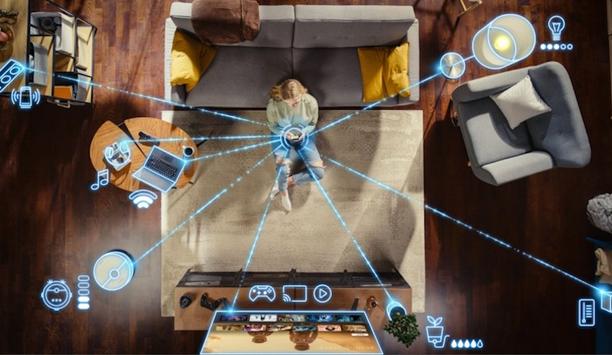An email was received from a director of a newly opened student accommodation facility. The tone of the email was almost incredulous. Having installed electric panel heaters in around 200 rooms he was finding that the occupants were adjusting the room thermostats to 35°C and then leaving them at this setting constantly. To cool rooms that were too warm, windows were being opened!
This, unfortunately, is not an uncommon issue, and with the energy cost crisis biting, reducing the use and therefore the spend on energy has swiftly risen to the top of many agendas. Factors that affect energy costs are many and varied, government regulation; weather forecasts; storage of fossil fuels; demand; transport; to name a few.
But in recent weeks everyone's minds have been sharply focussed by global markets and supply. Stable energy imports are, perhaps, no longer as reliable as we thought. Many forecasters are predicting interruption to supply and high prices for the foreseeable future.
Rising cost and scarcity
Whichever method of energy generation is delivered, whether from gas, renewables or nuclear, with costs rising and scarcity becoming a very real possibility, control at the point of use is the only way for organisations to supervise consumption and keep a handle on costs for themselves.
The current unpredicted energy crisis will hopefully be relatively short term. But growth forecasts for some sectors project very predictable long term demand for energy. Purpose built student accommodation (PBSA) is experiencing a relentless expansion.
Just considering population growth, latest reports1 suggest a further 40,000 new university places will be required by 2035. When participation rates are considered, a staggering 350,000 additional places will need to be made available in the same timescale.
There are currently 115,000 new beds in the PBSA development pipeline. In 2021 alone there was a net increase of just over 21,000 new beds entering the market.The ease of moving into high quality, fully serviced rooms is very attractive when going to university. This is what has fuelled the growth in this sector to almost 700,000 purpose-built beds.
Energy demand
Managing energy use in student accommodation can pose a real conundrum for energy managers
A population of this size has a similar energy demand to that of a medium sized UK city. With decarbonisation target deadlines looming, accommodation providers need to minimize energy waste, in terms of both costs and carbon.
Managing energy use in student accommodation can pose a real conundrum for energy managers, particularly when an ‘all-inclusive’ deal is the business model.
The occupants expect comfortable rooms but have no responsibility for directly footing the bill for the heat they use, while energy managers need to curb unnecessary energy use but maintain comfortable rooms and happy occupants!
Control systems
For the sender of the email mentioned earlier, the consideration, when converting his property should have extended beyond ‘which is the most cost-effective source of heat?’, to ‘how can that heat be controlled most effectively?’.
Control systems designed specifically for student accommodation provide managers with far greater influence on consumption than relying on integrated electric heater controls in each room. The minimum requirement should be programmable thermostats that only allow boost heating when asked for, reverting to the setback temperature after a pre-determined period.
This avoids the ‘set it and forget it’ at 35°C. The system should also sense empty rooms/open windows and reduce heat input accordingly. This type of thermostat, known as Local Control, is robust, built for non-domestic environments, and is tamper-proof. It requires a dedicated secure handset to programme each room individually.
For larger properties
For larger properties a centrally controlled Building energy Management System (BeMS) is a preferred option
For larger properties a centrally controlled Building energy Management System (BeMS) is a preferred option. A system that performs the same basic tasks as Local Control units but is operated via an internet portal.
This provides energy managers with access to every room, remotely – recently, a real benefit during the pandemic. The room node is more sophisticated than the Local Control type and can also monitor environmental conditions such as humidity, light, CO2, and decibel levels – automatically alerting managers to unusual readings.
Stepping out of the bedroom and into the bathroom, even greater savings can be made when the BeMS controls water heating. With this comes the potential for leak detection and the monitoring of complete water system temperatures.
Various functions of BeMS
BeMS don’t just provide economic benefits; convenience; fault finding in hardware; the archive of data; monitoring of best safety practices, are also present.
For example, the data collected from water systems provides evidence that the criteria used in Water Safety Plans have been adhered to for the prevention of legionella; When the kitchen is also included within the BeMS jurisdiction – monitoring of cooking appliances means the power supply is cut before ignition or flash points are reached should temperatures on the cooking surface reach dangerous levels or if the kitchen is left unattended by a distracted student.
The focus of concerns
In the current climate, efficient use of energy is the focus of concerns
But ultimately, in the current climate, efficient use of energy is the focus of concerns. The installation of a Building energy Management System can result in quite staggering savings – up to 40% has been cited.
The return on investment is usually quoted to be under 5 years, but with the instability in the energy market and rising costs that length of time could be slashed!
Now is not the time to try and save money, by buying cheap energy – there isn’t any! now is the time to make energy go further by not using it unnecessarily, after all, the cheapest energy is the energy we don’t use!















